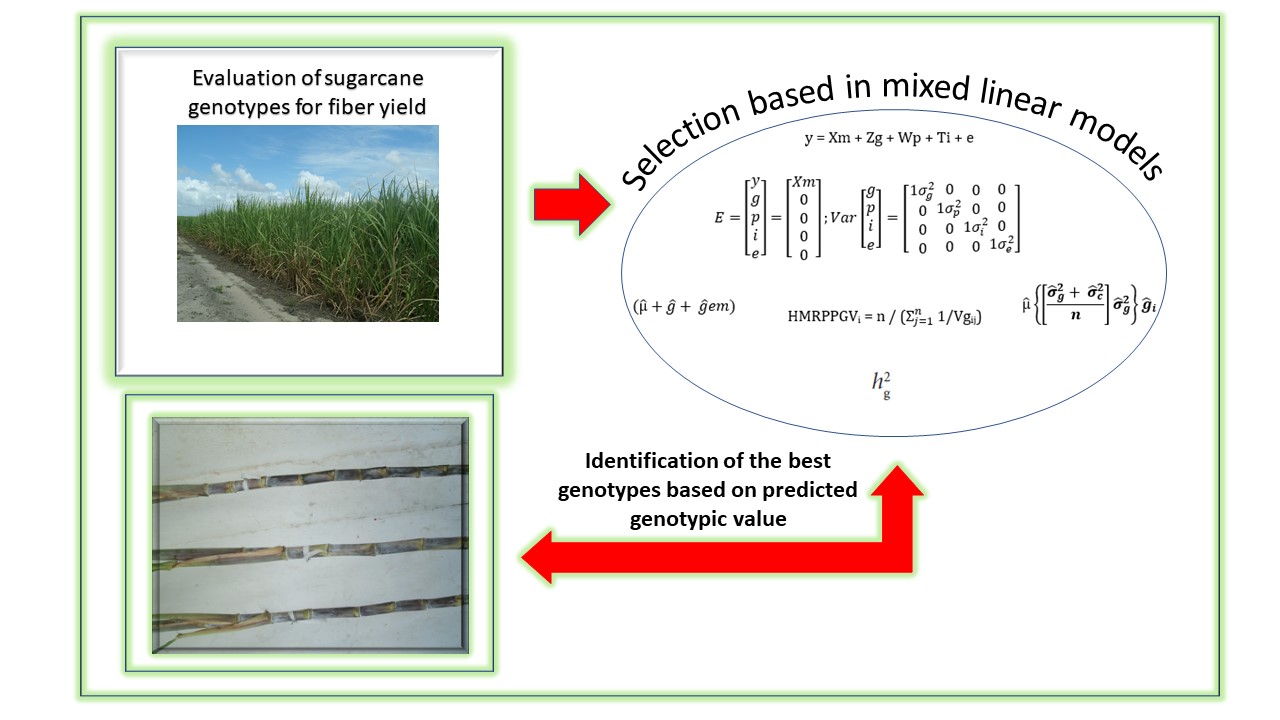Mixed modeling for fiber yield genetic selection in sugarcane
DOI:
https://doi.org/10.48162/rev.39.034Palabras clave:
biomassa, bioenergía, bioelectricidad, Saccharum spp., REML/BLUPResumen
The current demand for clean and renewable energy has provoked considerable changes in the production system of agroindustrial companies. The generation of bioelectricity through the burning of sugarcane bagasse has considerably risen in the recent years. This work aimed to focus on the sugarcane genotypes selection for fiber productivity. The experiment was outlined in randomized blocks with four repetitions, and sixteen genotypes were evaluated. The evaluated traits were: cane tons per hectare, sucrose tons per hectare, fiber tons per hectare, fiber content and apparent sucrose content. To the selection, the mixed linear models methodology was used. The heritability coefficients suggest a significant genetic gain and the harmonic means of relative performances of predicted genotypic values allowed the identification of stable genotypes related to the traits evaluated in four harvest cycles. Considering the current average demand of sugarcane agroindustry for varieties with fiber content between 12% and 17% and sucrose content near 13%, for energy generation and sugar production, the genotypes EECAC 06, EECAC 03, EECAC 04 and EECAC 07 are presented as commercial cultivation options.
Highlights
- Mixed models constitute an efficient tool for sugarcane selection focused onto fiber and sucrose production.
- This methodology provides significant genetic gains based on predicted genetic values free from interaction with harvest cycles.
- The evaluated genotypes present high fiber and sucrose productivity, genotypic adaptability and stability throughout harvest cycles, indicating longevity in the sugarcane crop.

Descargas
Publicado
Número
Sección
Licencia
Derechos de autor 2018 Revista de la Facultad de Ciencias Agrarias UNCuyo

Esta obra está bajo una licencia internacional Creative Commons Reconocimiento-NoComercial-CompartirIgual 3.0.
Aquellos autores/as que tengan publicaciones con esta revista, aceptan las Políticas Editoriales.



